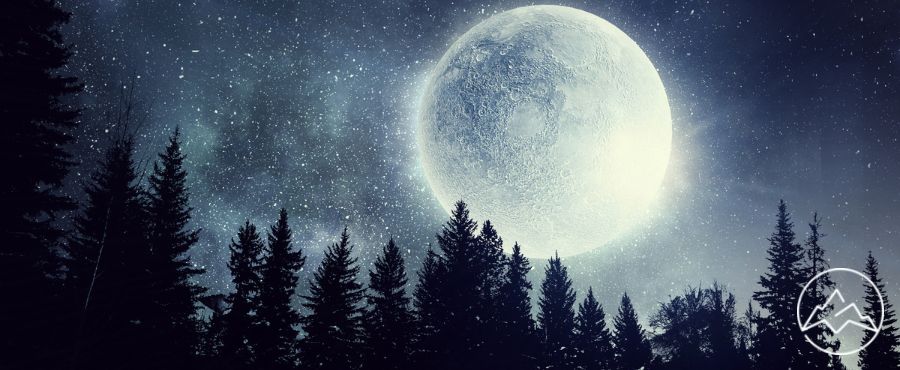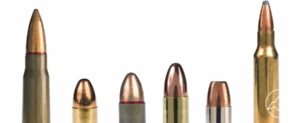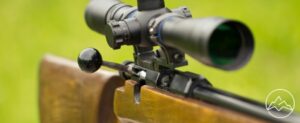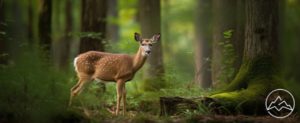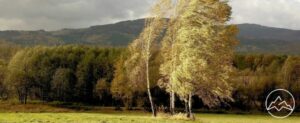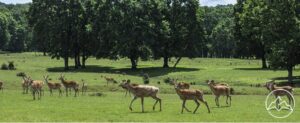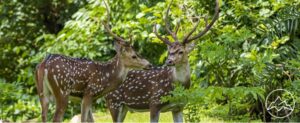Hunting big game remains as popular as ever, and deer hunting is one of the most popular forms of hunting. Deer typically feed twice a day during deer season and will move around this feeding schedule. Deer behavior and activity will change based on humidity, temperature, and season; activity commonly increases during cold fronts, making these the best days for a deer hunter.
Does the moon phase affect deer movement?
Humanity has been hunting whitetail deer for millennia, beginning in the Stone Age. Since then, we’ve been searching for ways to outwit our prey, including environmental factors that we can predict. We’ve speculated that moon phases could influence deer movement for hundreds of years, but does it really?
What are the moon phases?
The moon orbits the earth continually, with one side of the moon being visible from the earth. Depending on the current orbit, the moon is illuminated by sunlight at varying degrees across the month. These degrees account for the lunar phases, spanning around a week.
- New Moon – The moon isn’t visible; it’s in the sun’s shadow.
- First Quarter – The moon’s right side is illuminated by the sun.
- Full Moon – The moon is directly opposite the sun and is fully illuminated.
- Third Quarter – This degree lets the sun illuminate the left half of the moon.
To break things down further, between the first and new quarters, the phase of the moon is called a ‘Waxing Crescent Moon’. When the Moon is illuminated 50-100%, it’s called a ‘Waxing Gibbous’ between the First Quarter and Full Moon. It’s ‘Shrinking’ or ‘Waning Gibbous’ from the Full Moon to the Third Quarter. It’s called a ‘Waxing Crescent’ from the Third Quarter to the New.
What does the moon phase affect?
The Moon’s gravitational pull changes a lot – for example, it controls the oceans’ tides when orbiting the earth. Since most animals are made up of 50%+ water, it’s a reasonable theory that the moon phases affect them. Research has been done on lunar cycles affecting reproduction, ER units, road traffic accidents, suicides, and crimes. Hundreds of hours have gone into these theories, but most data is inconsistent or poorly correlated. There is evidence that the moon cycles have some effect, though. Some reproduction and migrations of aquatic species are connected to the lunar cycle. Changes also influence most animal behavior in daylight or photoperiodism.Does the moon affect deer movement?
There are various theories about how the moon impacts deer movement. One of the most common is that the moon’s position causes deer movement to increase when the moon is directly overhead. Many of my friends buy into this theory, but I’ve yet to see any scientific proof to back this theory.
Another popular theory is that deer move more at night and less during the day when the moon is full. In my years of experience, deer activity does seem to decline during a full moon. I see less movement during the usual peaks (dusk and dawn). This is alongside a notable but slight increase in movement during the day.Former Chief Wildlife Biologist Dr. Mickey Hellickson used a GPS to monitor the movements of collared deer for two years. Results showed that buck movements peaked in the early mornings and evenings, consistent with my experience. But there was no notable difference in the moon phase. The study concluded that “although the moon could influence buck movements in other ways,” the data ”did not indicate any patterns relative to the effects of the moon phase on buck movements.”
Some studies indicate that deer feed more often during the new moon cycle, but these studies are also tenuous.The rut and Moon phases
Since the onset of the breeding season is influenced by light, it’s commonly suggested that the Moon phase influences the timing of the rut (and indirectly influences peak movement periods).
It’s a good theory; since the full Moon doesn’t co-occur each month/year, peak dates change from year to year. But there’s no objective evidence to support it.
There’s a variability of peak breeding dates from state to state. In Iowa, peak breeding is November 8-15 and in Maine is November 17-23. The breeding dates vary even more as you move south, with Mississippi’s season running from December (north) to late January (south).
While peek breeding can vary by a month or more, every state’s peak breeding dates occur at almost the same time every year, despite the changes to Moon phase timing. Some states have decades of data.
The rut
Many folks don’t understand what ”the rut” even is. Put simply; it’s the period in which deer can mate. It encompasses all of the behavior related to breeding and courtship. This includes bucks first pawing the ground (to leave his scent) to bucks squaring off to determine which is the dominant buck. One of those bucks will go walkabout searching for a mate.
Peak whitetail rut is one of the best times to hunt as even cautious mature bucks will drop their guard and leave themselves open. Peak rut is peak breeding, with brief bouts of activity for hunters to strike in. There are distinctive behaviors associated with the rut phase, but individual deer aren’t necessarily synchronized at this time. At the same time, where a buck is chasing does, another buck may cautiously approach a doe and lose interest.It’s not unusual for rut ‘phases’ to be local and short-lived. A rut phase typically goes something like this:
A buck wakes up, strikes out in search of a fertile doe, and enters the seeking phase. If he catches a doe, they’ll go into lockdown. All while other deer are shifting in/out of the rut phase.
Science and biologists
Scientists, especially wildlife biologists, are skeptical people. When it comes to animal behavior, you won’t get them to say anything definitive unless it’s been peer-reviewed, tested, and proven. Anything in a scientific journal has been picked apart and is determined to be accurate and truthful. There’s very little scientific evidence showing an undisputed correlation between moon phases and deer movement. That doesn’t mean that the information is worthless, but you should study and note the patterns you see.
FAQs about How Does The Full Moon Affect Deer Hunting
How does the light of a full moon affect deer movement?
What techniques are most effective when hunting during a full moon?
Does the presence of a full moon increase or decrease the chances of success when hunting deer?
How do hunters best take advantage of increased visibility from a full moon when hunting deer?
Does the presence of a full moon make it easier or harder to hunt deer?
Conclusion
The trends noted by scientists are very tenuous, and there are several variables, making it difficult to conduct a controlled experiment. Deer movements can be influenced by day length, precipitation, temperature, barometric pressure, and wind. No definitive data suggests that deer movements are affected by the moon phases, but some anecdotal data suggests it might be. You should get out there during hunting season and see what you find if you’re curious.

